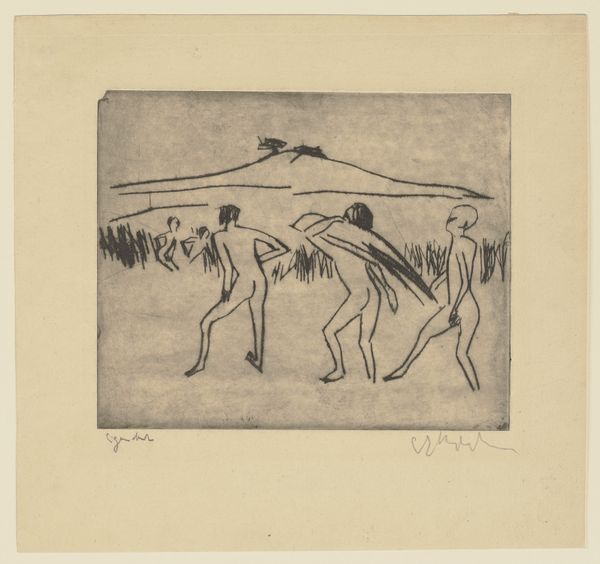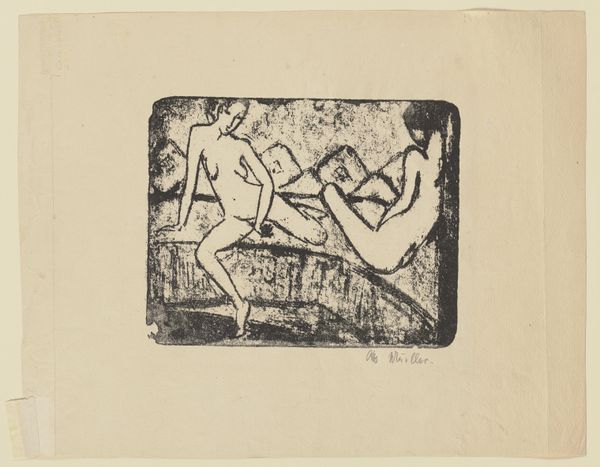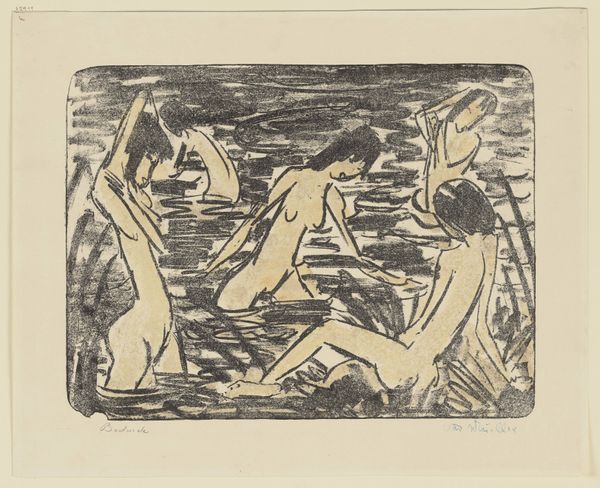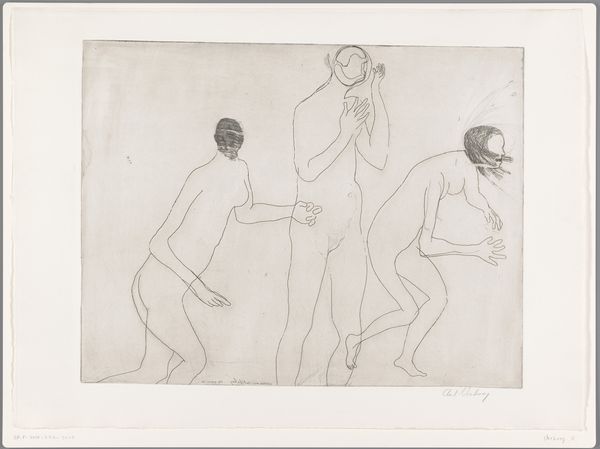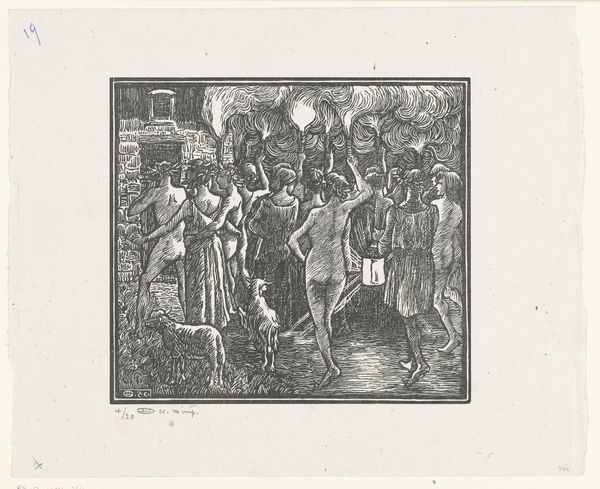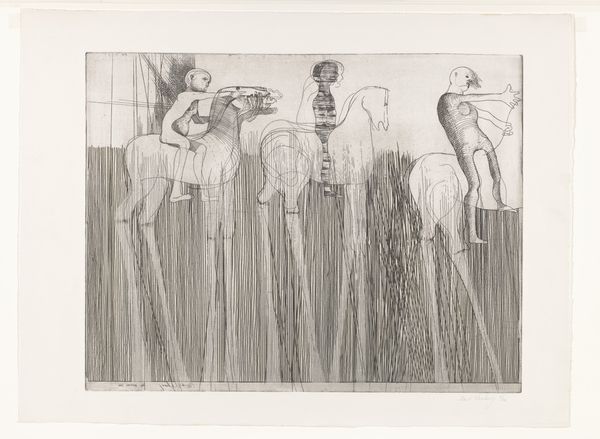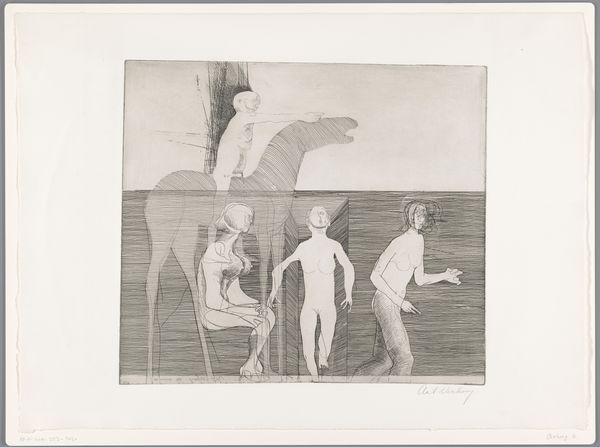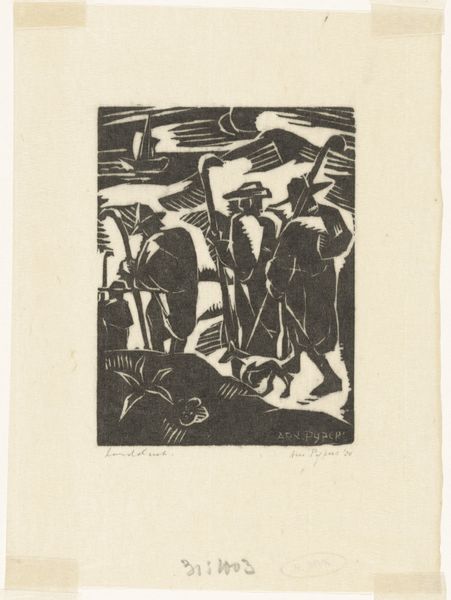
print, woodcut
# print
#
caricature
#
figuration
#
expressionism
#
woodcut
#
line
#
nude
Dimensions: height 270 mm, width 310 mm
Copyright: Rijks Museum: Open Domain
Curator: Immediately striking is the stark contrast, isn't it? It’s quite a powerful composition despite its relative simplicity. Editor: It definitely grabs your attention. There’s almost an unsettling quality to the figures, a kind of raw vulnerability made stark by the limited palette. Curator: Precisely. We’re looking at a woodcut entitled "Dansende Papoea's," or "Dancing Papuans," made before 1922 by Johannes Frederik Engelbert ten Klooster. The printmaking technique, the woodcut, speaks volumes about its materiality. It shows an artist actively engaged in manual processes to make reproducible artworks. The relief printing lends itself to that dramatic high contrast feel. Editor: And what does it suggest about Klooster's engagement with the people and places represented here? Papua was, of course, undergoing significant colonial influence at the time. These stylized figures and their implied dance might represent a romanticized or perhaps even exploitative gaze from a European artist towards Indigenous cultures. Curator: The title itself invites examination. "Dancing Papuans" positions these figures as exotic others for a Western audience. But, turning back to the printmaking, the lines themselves appear almost aggressively carved into the wood block. Editor: The intentional roughness in the execution challenges traditional academic art, suggesting a movement away from classical ideals of beauty, especially how it engages with primitivism. It reflects expressionistic qualities while showing bodies seemingly disconnected from themselves. I find myself wondering about the artist's intended meaning versus the potential harm caused by objectifying representations. Curator: Exactly! What the means of production show can offer such conflicting readings. Editor: It brings to mind questions around agency. How much control did these Papuan people have over their image, their representation in European art markets? What responsibility does an artist have when depicting communities different from their own? Curator: In terms of the method used, one can even suggest an ironic comparison—the rough lines stand in stark contrast to academic standards of figure study, which only goes to further underscore those same tropes by not actively undermining them, no? Editor: Absolutely, the choice of technique might seem to align with primitivist trends but in that very action, reinforces colonial power dynamics rather than dismantling them. I'm left grappling with the weight of this image within that historical context. Curator: Indeed, viewing this through today's cultural landscape, its material origins open a pathway to crucial discussions about accountability. Editor: The labor put into each stage has a tangible social implication for contemporary readings of historical images. Thank you, Klooster, for reminding us where those steps lead.
Comments
No comments
Be the first to comment and join the conversation on the ultimate creative platform.
